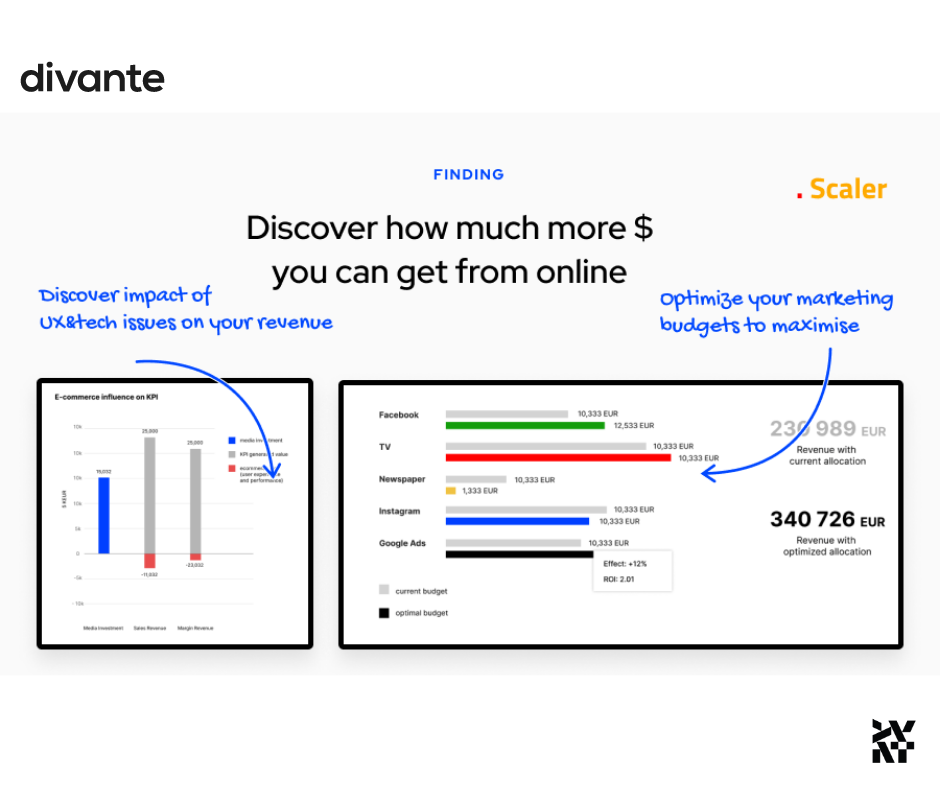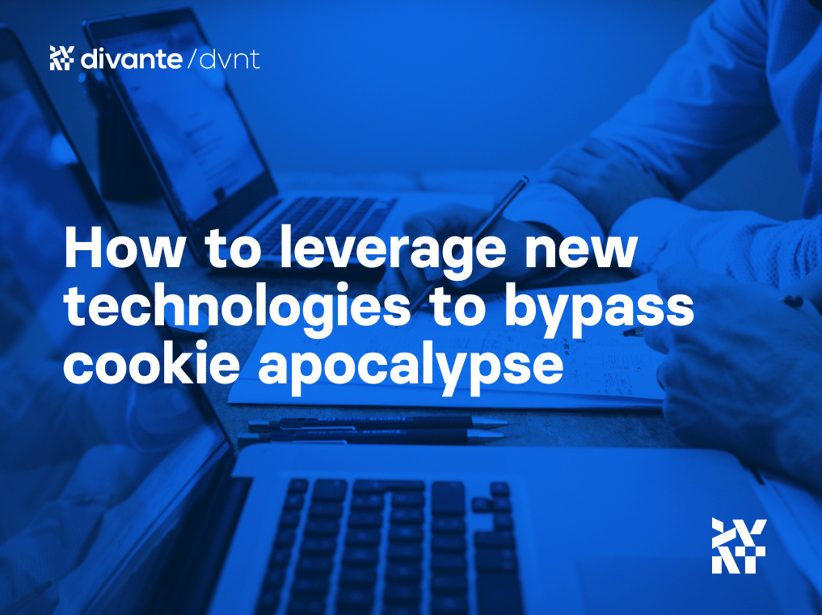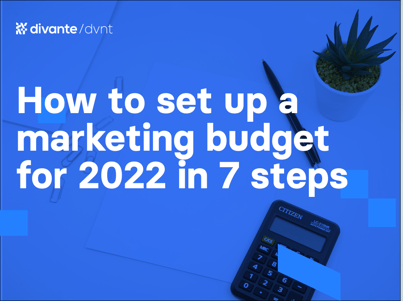Reaching target consumer groups is more difficult today than it used to be. Media usage habits are extremely diverse, new digital channels are gaining importance, and consumer behavior and influences are changing rapidly. The fact that the entire digital ecosystem is constantly changing further complicates your marketing plans. At the same time, data protection is gaining more and more attention.
Imagine a time, let's say the 80s, when a commercial was shown on TV or printed in the press. In the optimistic version, there was an increase in sales as a result, but it was impossible to determine what actually influenced this.
Today, we're spoiled by the capabilities and tools to analyze the entire sales funnel. From the first click on a Facebook ad to the final purchase on the website, all the numbers are available to us. Actually, we were spoiled because now the cookie apocalypse is upon us. Whether we like it or not, soon we can feel like marketers from the 80s again.
The "cookie" itself is nothing more than a script that allows you to combine subsequent actions of a given user in the network. Thanks to it, the company can know what we click on, what pages we visit, how much time we spend on them, what ads we see, whether we clicked on any, etc.
Cookies (and especially the so-called 3rd party cookies) are one of the basic tools thanks to which advertisements persistently chase us around the Internet, and companies follow our activities on the Internet. It is these cookies that are to be banned in 2022. The date is inexorably approaching and more and more people are starting to wonder how such a change will affect the internet as we know it today.
Privacy gets out of hand
We’ve all heard about creepy situations where you're randomly talking to your friend about a new dress. Moments later, your browser is flooded with offers for short and long versions of dresses. After all, 81% of respondents believe that companies know too much about us and it’s hard to control it.
On the other hand, customers want to be addressed individually and receive personalized offers. Without access to data and cookies, that's extremely difficult.
We decided to focus on this topic at Innovation Lab. We analyzed the current situation, trends, and solutions. On this basis and as a result of various experiments, we created our answer to the challenging times the cookie apocalypse will bring. More about that in a moment.
Apple privacy changes in practice
Take Apple, for example. In the latest version of the operating system iOS14, the user can decide whether to share data with external companies,such as Facebook. Users can also determine which data to share.
By logging in to Facebook, you agree to its cookie policy. This means that the user agrees to be targeted by personalized ads and to share the data about their visits and behavior on external websites. This can mean adding something to a cart, browsing products, or submitting a contact form.
Based on this data, Facebook algorithms train ad sets to achieve specific goals, such as "view content," "purchase," etc. Facebook then displays these ads to users who are likely to perform such actions
The creators of Facebook ads are free to target their ads directly to people who, for example, have visited the website but not made a purchase or to create similar groups based on pixel events. Most importantly, they can be used to report the results and effectiveness of advertising activities.
Every Facebook and Instagram user has open access to the data collected about them by Facebook. This includes off-Facebook activity, advertising preferences or even the "why am I seeing this ad" information.
However, this isn’t enough for Apple. Their new policy provides for the highest possible protection of the privacy of their device users. With the latest iOS14 update, the roles in the data game are reversed. It doesn’t matter that the user agreed to the cookie policy when creating a Facebook account. Now, Facebook has to ask iPhone and iPad users if they agree to have their activity tracked when they use Facebook and Instagram. Users can agree or not.
The restrictions Apple introduced affect the ability to serve ads on mobile devices running iOS14 software. This means changes to ad targeting, remarketing, and performance measurement.
Additionally, Facebook will be making changes to the available attribution models. The 28 days from click, 28 days from view, and seven days from view models will be eliminated. The default attribution will be seven days from the click. Events will be recorded when they occur, not when an ad is displayed, and will be reported up to two days after the event occurs.
It's worth taking a look at Facebook's official resources on this topic. It provides recommendations about what you can do to prepare your business for these changes.
What’s Google's response to this?
Research from Euroconsumers shows that nearly 70% of internet users feel they cannot protect their own privacy online. Concern about the increasing loss of privacy is a major issue among governments and organizations. That's why Google is proposing to lead the way with a new approach to cookie collection and a new standard for advertisers.
Cookies are one of the cornerstones of online advertising. Through them, personalized and relevant ads are displayed that correlate with the interests and needs of specific internet users. Unfortunately, the collection of cookies has led to a multiplication of individual user records that are in the hands of thousands of different third parties.
An alternative to individual cookies will be a set of new Privacy Sandbox standards designed to change the face of online advertising. Thanks to these standards, it will soon be possible to eliminate the use of third-party cookies in ad targeting. They’ll be replaced with information that describes larger groups of users with common interests. This is the result of solutions developed by Alphabet that focus on aggregating and anonymizing information. Google plans to begin implementing the new system for Google Ads in the second quarter of 2021. Alphabet will not offer solutions that allow users to be identified because the giant's API is designed to protect privacy on a personal level.
In addition to leveraging existing technology, the measurement framework is critical. The combination of digital attribution, incremental testing, and market mix modeling (MMM) gives marketers the ability to build a less cookie-based measurement framework. This framework will provide the most complete picture of performance and effectiveness.
What is MMM?
Marketing mix modeling (MMM) is an analysis of the historical relationships between a brand's marketing activities and its sales. MMM is based on advanced statistical methods. The econometric models used make it possible to measure and maximize the impact of marketing mix elements, including the impact of communication, on sales.
Thanks to econometric models, it’s possible to find out where to limit investments in marketing without significantly reducing profit. You can also determine where significant increases can be achieved by slightly increasing investments. For example, how best to allocate the advertising budget to individual communication channels so that the brand achieves higher sales for the same marketing budget.
Does this mean the end of effective planning and allocation of marketing resources? Not necessarily. You'll find that you can measure much more with this new approach.
With MMM models you are able to answer questions like:
- What is the ROI of different marketing activities?
- What is the contribution to sales of spending on different media? To what extent do marketing activities increase sales? How does this influence change over time?
- What can be done to make spending more effective and produce more tangible results?
- Is there a point at which it no longer makes sense to increase investment in a particular communications channel?
Generally, the output variable is sales or conversions, but it can also be things like website traffic, or another KPI. Your input variables typically include marketing spend by channel and time period, like day, week, month, quarter, etc.
What’s our answer

During a four-week sprint at the Innovation Lab, we conducted research and interviews with marketing experts from various industries. We were primarily interested in what data they collect, how they analyze and store them, and how to use them in the model.
Our goal was to create a tool that will do more than just allow you to bypass cookies when creating simulations and optimizing your marketing. We wanted to comprehensively facilitate the work of digital, marketing, and eCommerce Managers in their daily decisions.
We chose to build our solution based on Robyn, the algorithm developed by Facebook. It runs a variety of experiments at once to find the appropriate relationship between different factors based on historical data.
As a result, the analysis provides an answer to the question of how to improve the outcome of the expenditure made. The model gives you the ability to answer "what if" questions about likely outcomes from future changes in spending. You’ll also be able to answer "what would be best" questions about how best to determine and allocate your marketing budget.
But that's not all. We decided to go a step further and do more than just experiment to find answers to the question of how to allocate the marketing budget.
As a market leader with over 10 years of experience in building eCommerce, we took the components of eShops into the workshop. This allows us to determine how individual elements, such as page load speed, payment method selection, or order processing platforms, affect the shop's revenue.
Divante consultants with extensive technical and business expertise interpret the impact of these models using analytics and knowledge backed by years of experience in eCommerce.
You can learn more about Predicty on its website. You can also sign up for a free demo where we will show you how it works. If the topic of marketing analysis and distribution in the face of the cookie apocalypse is something you’re concerned about and you have any questions, contact us.
Published July 16, 2021










